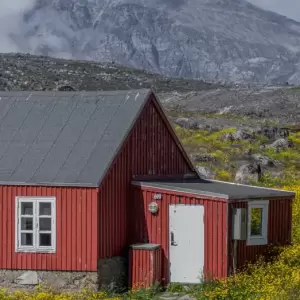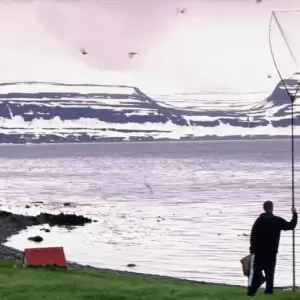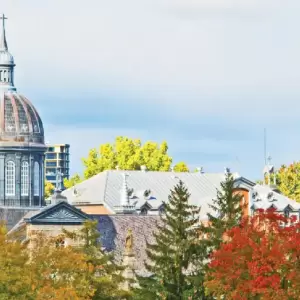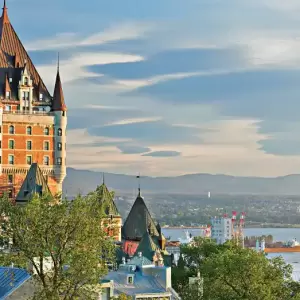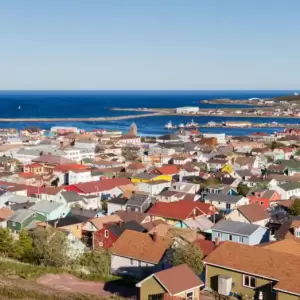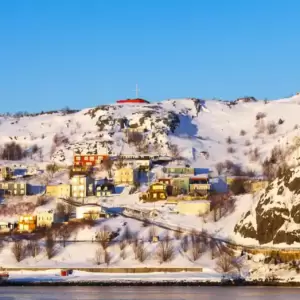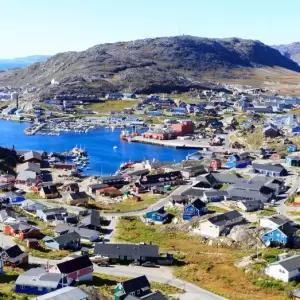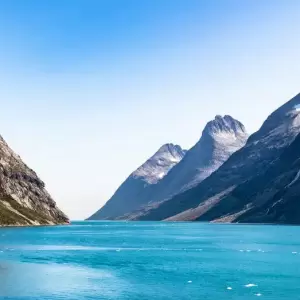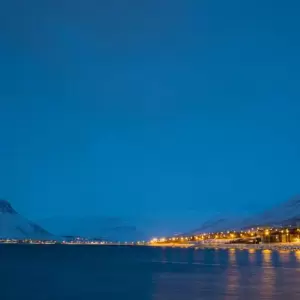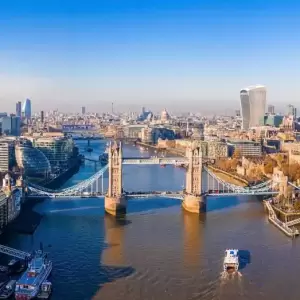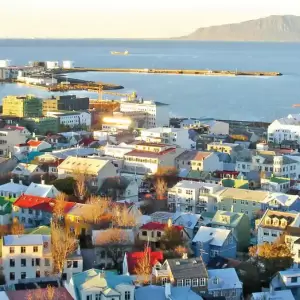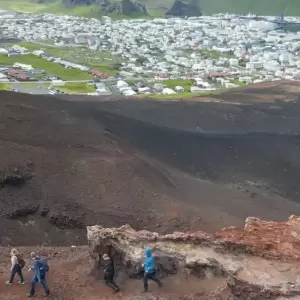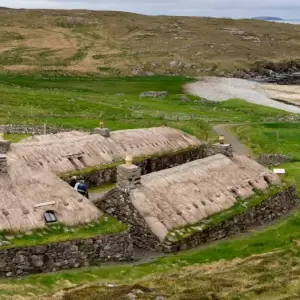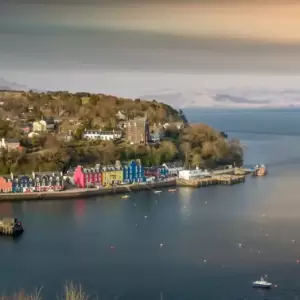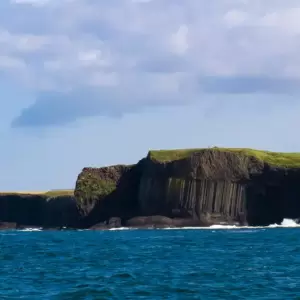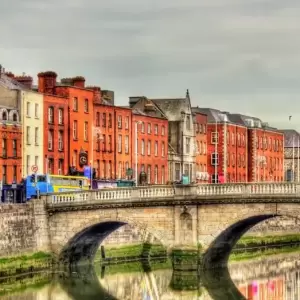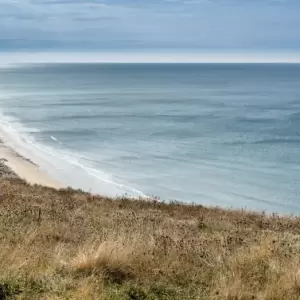24-Day Route of The Vikings
Seabourn | 24 Days | London to Montreal
August 9 - September 2, 2025
Embark on a 24-day voyage from Dover, England, to Montreal, Canada, visiting stunning destinations along the way. Explore the charm of the Isle of Wight, Ireland's lively Dublin, and Scotland's scenic Holy Loch, Staffa, and Tobermory. Discover the beauty of Iceland's Westman Islands, Reykjavik, and Isafjordur, before cruising through Greenland's dramatic Prince Christian Sound, Nanortalik, and Qaqortoq. After several days at sea, arrive in Canada, stopping at St. Johns, Newfoundland, Saint Pierre and Miquelon, and Saguenay, Quebec. Conclude your adventure in the vibrant cities of Quebec City, Trois-Rivieres, and Montreal.
AAA Member Benefits and Special Offers:
Member Benefits
- Up to $200 per suite onboard credit (single or double occupancy)
AAA Vacations Amenities
Up to $200 per suite onboard credit (single or double occupancy)
Your Ships: Seabourn Sojourn
Onboard Activities
- Card Room
- The Club
- The Colonnade
- Fitness Center
- In-Suite Dining
- Observation Bar
- The Patio
- The Restaurant
- Seabourn Square
- Sky Bar
Day 1 (AUG 9): Dover (London), England
Departs 5:00pm
Approaching the coast, ships are greeted by the ethereal White Cliffs of Dover. This iconic strip of milky-white land serves as England's welcoming beacon, its stark beauty becoming more apparent as you draw closer. The coastline unfurls like a grand tapestry, its white chalk cliffs streaked with black flint, rising majestically 350 feet straight from the sea's embrace.
Day 2 (AUG 10): Cowes, Isle of Wight, England
The Georgian harbor town of Cowes, situated on the Isle of Wight, has been the home of international yacht racing since 1815. It is famous for Cowes Week, the largest and longest-running sailing regatta on earth. The Isle of Whyte was once a favored retreat of Queen Victoria and Prince Albert. Osborne House still retains a large collection of their royal possessions, photography and art. The Isle of Wight is known for its Georgian architecture. Majestic Northwood House Estate is an elegant country manor, housing the Cowes Maritime Museum and tranquil Northwood Park. The Sir Max Aitken Museum was constructed during the 18th century and contains his extensive personal collection of maritime artifacts.
Day 3 (AUG 11): Day at Sea
Day 4 (AUG 12): Dun Laoghaire (Dublin), Ireland
For fans and followers of all the arts, as well as those passionate about cultural and political affairs, Dublin is a rich feast of historic sites and memorable associations. Stroll the gorgeous, Georgian grounds of Trinity College, or the lawns of St. Stephen’s Green, and literary allusions encircle you. Stand before ancient Christ Church Cathedral, or in the hushed, timeless aisles of Marsh’s Library. Towering Dublin Castle was the stronghold of the British for seven centuries, and the General Post Office gained notoriety and renown on the same day in the Easter Rising of 1916. Ireland is famous for thirsts other than for knowledge, however, and you are also invited to visit the Guinness Storehouse and the Old Jameson Distillery to taste the “water of life.”
Day 5 (AUG 13): Holy Loch, Scotland
Cut into the northwestern shore of the Firth of Clyde in Scotland’s Argyll and Bute, Holy Loch gets its name from its long association with Christian churches. In Kilmun the 19th century church stands on a site where earlier ones are believed to date to the 6th or 7th Century. At Sandbank, the Robertson’s Yard built famous wooden 12- and 15-meter racing yachts from the late 19th through the mid-20th Century, including several America’s Cup challengers. In World War II, Holy Loch was used by the Royal Navy as a submarine base, and during the Cold War from the 1960s until the 1990s the United States also used it as a base for its nuclear submarines. Nearby Dunoon, and its now-ruined castle, was the seat of Clan Campbell, later the Earls of Argyll, until they moved inland to build the castle at Inveraray. In fact, Mary Stuart, Queen of Scots, was an occasional guest there. Popular attractions around Holy Loch include the Benmore Botanic Gardens, Inveraray Castle and Scotland’s second-largest city, Glasgow.
Day 6 (AUG 14): Staffa, Scotland
The petite island of Staffa found amongst the Inner Hebrides, is lauded for its remarkable geology. The Vikings named it Stafyi-øy or 'stave island', as its rock formations evoked images of their vertically placed log houses. Staffa is an intriguing spectacle of hexagonal columnar basalt, formed sixty-five million years ago when erupting lava cooled rapidly. Over time, the relentless Atlantic waves eroded a weakness in the rock, resulting in the legendary Fingal’s Cave. Known previously as ‘The Musical Cave,’ it's famed for the mesmerizing sounds produced by sea water echoing against the cavern walls. This is a unique chance to explore the same island that Sir Joseph Banks, Captain James Cook’s naturalist, promoted in 1772. Numerous illustrious figures, including Jules Verne, William Wordsworth, John Keats, Alfred Lord Tennyson, Queen Victoria, Prince Albert, artist JMW Turner, and young Felix Mendelssohn have also graced Staffa with their presence.
Day 6 (AUG 14): Tobermory, Island of Mull, Scotland
Established in 1788 as a fishing port, Tobermory gracefully wraps around the harbor and ascends into the hillside beyond. Its name, derived from Gaelic, alludes to 'Mary's well,' a feature you can still find at the bay's end.
Day 7 (AUG 15): Stornoway, Isle of Lewis, Scotland
Stornoway, perched on the Isle of Lewis in the Outer Hebrides, was etched onto history by Vikings in the 9th century. Yet, its Hebridean roots stretch back even further, as evidenced by standing stone circles and pottery shards dating back at least 5,000 years. The island is a living museum of times past, with traditional blackhouses, some remarkably used until the 1970s, and Lews Castle, a modern homage to Tudor architecture. Latta’s Mill, a rejuvenated 19th-century water mill, operates as an attraction, while fishing, farming, and Harris Tweed production remain central to life on Lewis.
Day 8 (AUG 17): Heimaey, Westman Islands, Iceland
Heimaey Island is the largest in the Westman Islands located four miles off the south-west coast of Iceland. One of the most visually impressive islands in Iceland, it is ringed by tall, vertical sea cliffs many hundreds of feet high. Heimaey is also the home to over eight million Atlantic puffins, more nesting puffins than anywhere else on earth. A local story tells that puffin chicks, taking their first flights at night, often become stranded in the village streets, where the local children rescue them and set them free the next day.
Day 9 (AUG 18): Reykjavik, Iceland
Reykjavík, established by Viking settler Ingólfur Arnarson around 870 C.E, is the location of the first permanent settlement in Iceland. The census of 1703 recorded that Reykjavík had 69 residents and consisted of a farm and a church. The impressive statue of Leif Erikson, in the center of town, reminds all of Iceland’s Viking heritage. Its name translates to ‘smoky bay’, due to the geothermal nature of the surrounding area. Today about 200.000 people live in the Icelandic capital, roughly 60% of the country’s population. It has evolved into a sophisticated city. The northernmost national capital in the world is also one of the cleanest, greenest, and safest on Earth. Walking Reykjavik streets one will find rich culture, history, music, shopping and in the late hours vibrant night-life. Colorful rooftops and the elegant spire of Hallgrímskirkja Church dominate Reykjavik’s skyline. Known for its arts, Reykjavik hosts a number of internationally recognized festivals, notably the Iceland Air music festival, Reykjavik Arts Festival and the Reykjavik International Film Festival.
Day 10 (AUG 19): Vigur, Iceland
The Westfjords in northwest Iceland is a remote and sparsely populated peninsula of steep, tall mountains cut by dozens of fjords. The lack of flat lowlands suitable for farming played a key role in keeping this region wild and sparsely populated. The raw and untamed natural landscape around Ísafjörður is characterized by a subarctic environment. A colorful show of blooming tundra wildflowers carpets the mountain slopes and valleys during the short, cool summer. Vigur Island, second largest island in the Westfjords region, is one of the most renowned areas in Iceland for viewing nesting birds en masse. The area’s cliffs host an astonishing wealth of nesting birdlife, while the occasional arctic fox can be spotted patrolling the edges of the bird colonies in hope of an easy meal.
Day 10 (AUG 19): Isafjordur, Iceland
The Westfjords in northwest Iceland is a remote and sparsely populated peninsula of steep, tall mountains cut by dozens of fjords. The lack of flat lowlands suitable for farming played a key role in keeping this region wild and sparsely populated. The raw and untamed natural landscape around Ísafjörður is characterized by a subarctic environment. A colorful show of blooming tundra wildflowers carpets the mountain slopes and valleys during the short, cool summer. Vigur Island, second largest island in the Westfjords region, is one of the most renowned areas in Iceland for viewing nesting birds en masse. The area’s cliffs host an astonishing wealth of nesting birdlife, while the occasional arctic fox can be spotted patrolling the edges of the bird colonies in hope of an easy meal.
Day 11 (AUG 20): Day at Sea
Day 12 (AUG 21): Cruising Prince Christian Sound
The transit of the Prince Christian Sound is one of the highlights of cruising in Greenland. The approximately 60-mile sound cuts between the mainland and an archipelago of islands from east to west, under the southern edge of the massive Greenland Ice Sheet, which covers 80 percent of the island. The sound is narrow, sometimes as little as 1500 feet across, and numerous glaciers reach the sea on its shores, calving icebergs into the sound. High, barren and sharply defined peaks tower on both sides. The only indications of humanity to be seen are the Ikerassasuaq weather station (using the Greenlandic name for the sound) where the ship enters, and the small village of Appilattoq, housing approximately 100 people. Animal life is more abundant, with minke, fin and blue whales seen frequently, as well as ringed and bearded seals that haul out on the floating ice. It is a breathtaking display of natural splendor in the severe, rugged vernacular of rock, ice and sea that is unique to the arctic realm.
Day 13 (AUG 22): Nanortalik, Greenland
The immense scale of the peaks around this village dwarfs anything built there. Still, the tall white steeple of the church juts up with a spirit of endurance and perseverance that matches the character of those who make this arctic outpost their home. It also echoes the shape of icebergs floating in the surrounding seas, shed from the immense icefields that cover much of the island.
Day 14 (AUG 23): Qaqortoq, Greenland
Qaqortoq is the largest city in Southern Greenland with 3,300 inhabitants. The town rises steeply above the natural small-boat harbor with its fish, shrimp and fur processing plants. It was founded in 1775 by the Dano-Norwegian trader Anders Olsen, working on behalf of the General Trading Company. Qaqortoq is best known for its open-air art exhibition. The Stone & Man project, designed to transform the town into an outdoor gallery, had the participation of 18 Nordic artists from Iceland, Sweden, Norway, Finland and Greenland. Initially 24 stone sculptures were created using the existing rock faces and boulders in the town. Now there are over 40 sculptures celebrating Greenlandic culture. Other points of interest include Mindebrønden, the oldest fountain in Greenland, the Qaqortoq Museum and The Saviors Lutheran Church. Eighteen kilometers northwest of town are the famous remains of the Viking church of Hvalsey. It represents the last written record of the Greenlandic Norse, who attended a wedding there in A.D. 1408. Hvalsey is the most prominent Norse site in Greenland.
Day 15-16 (AUG 24-25): Days at sea
Day 17 (AUG 26): St. Johns, Newfoundland, Canada
St John’s, the capital of Newfoundland, is our last port of call. As the ship squeezes through the ‘narrows’ and enters into the inner harbour, the cultural and traditional flavour of the city quickly becomes apparent. The two towers of the Basilica of St. John the Baptist are amongst the tallest buildings on St. John’s skyline. Heritage and culture are an important way of life here and enter into all facets of life. From the height and color of buildings, to a vibrant pub, folk and classical music scene, St. John’s has a style distinct from the rest of Canada. Its steep, hilly terrain is often compared to San Francisco. St. John’s is the oldest settlement in North America, having been discovered by John Cabot in 1497 and appearing on maps as early as 1519. It displays an architecture befitting one of the first British colonial capitals. Seventy-seven percent of the population is of English and Irish origin. Buildings are painted in the same vibrant colors of Greenland albeit, Canadian-style.
Day 18 (AUG 27): Saint Pierre and Miquelon
The tiny archipelago of St. Pierre et Miquelon is a territorial overseas collectivity of France, just 16 miles from the coast of Newfoundland, but nearly 2,400 miles from continental France. Lashed by the North Atlantic winds and chilled by the cold Labrador Current, the islands have a severe beauty enhanced by panoramic seascapes.
Day 19-20 (AUG 28-29): Days at Sea
Day 21 (AUG 30): Saguenay, Quebec, Canada
The city of Saguenay is situated on the beautiful Saguenay River 78 miles (126 km) upriver from its confluence with the mighty St. Lawrence. This is an area of countless natural wonders. The surrounding countryside is a combination of ageless coniferous forests, tranquil lakes and deep river-valleys. What gives the area its unique appearance is its geology. The Saguenay Graben is a great glaciated rift valley, the result of forces deep within the Canadian Shield some 200,000,000 years ago. Inhabited for thousands of years by the First Nations people, the Saguenay region during the early French colonial period was an integral part of the fur trade. Saguenay Fjord National Park with its steep rock walls and verdant forests is reminiscent of Norway. Natural history is showcased everywhere, whether it be the underwater exhibits of Musee du Fjord or the serene forest and riverside walks at Parc de la Riviere du Moulin.
Day 22 (AUG 31): Quebec City, Quebec, Canada
Founded in 1608, Quebec City is the capital of the Canadian province of Quebec and the cradle of French Canadian civilization. With its historic ramparts, churches and Old Town, it is considered one of the most beautiful cities in North America. Originally inhabited by First Nations peoples and known as Stadacona, the city is a magnificent living-history lesson with a remarkable mix of 17thcentury architecture, heritage, art, and culture, Quebec means ‘narrow passage’ in Algonquin, and it is here that the St. Lawrence narrows and is dominated by the steep cliffs of Cape Diamond, 333’ (102 m) above. Crowned by The Citadel, an imposing bastioned fortress, the heights of Quebec have defined the city since its founding. Elegant Château Frontenac towers above The Lower Town, a UNESCO World Heritage treasure. Discover the elegant beauty of Cathedral-Basilica of Notre-Dame de Québec and the natural beauty of Montmorency Falls. Battlefields Park and The Plains of Abraham tell the story of one of the most pivotal battles in history.
Day 23 (SEP 1): Trois-Rivieres, Canada
The early French outpost in Canada has many historic buildings, including the Ursuline Convent built in 1697. Tour the Old Prison, or visit the Sanctuary of Notre Dame du Cap.
Day 24 (SEP 2): Montreal, Quebec, Canada
Arrives 7:00am
The City of Montreal is a striking union of old-world charm and new-world attitude. Its name refers to the triple-peaked hill in the heart of the city, Mount Royal. Named a UNESCO City of Design in 2006, this island gem on the magnificent St. Lawrence River seduces visitors with a harmonious pairing of the historic and the new. Old Montreal’s 17th century architecture and cobbled streets showcase a proud and diverse French Canadian culture. Discover Place Jacques Cartier Montreal City Hall, Bonsecours Market, Pointe-a-Calliere Museum, and the Montreal Science Centre. A highlight is Notre-Dame Basilica with its striking twin towers built in the Gothic Revivalist-style and a splendidly ornate interior.
All pricing and offers for accommodations and other non-air travel are per person, based on double occupancy, capacity controlled and subject to availability and change without notice. Pricing does not include taxes, fees, fuel surcharges, gratuities, resort fees, or airfare unless otherwise noted and is valid on new bookings only. Prices, fees, and other restrictions are subject to supplier policies. All offers, including but not limited to, bonus amenities, upgrades, prices, and group benefits are based on select dates, resorts, room categories, and/or fare codes. Specialty pricing may require proper identification. Cancellation penalties, blackout dates, and other restrictions may apply. When traveling outside the United States a valid passport is required. It is the sole responsibility of the passenger to have the proper documentation and identification required by the United States and other governments at the time of travel. When passports are required, it must be valid for a minimum of six months past your date of return. AAA strongly recommends the purchase of Travel Insurance. Usage of a credit card for travel arrangements may provide additional protection, please consult your credit card policies. Under certain circumstances the package price may be subject to supplemental price increases imposed by the supplier. Price increases include, but are not limited to fuel surcharges, taxes or fluctuations in foreign exchange markets that may be imposed after the date of purchase. Air-inclusive prices do not include government imposed taxes and fees, including but not limited to a September 11th Security Fee, U.S. or international government imposed taxes and fees, Federal Excise Fees, among others. Some carriers charge additional fees for checked bags, fuel surcharge, meals, etc. Please check the carriers website for details. Air-inclusive pricing is based on select departure cities. Prices from other cities may vary. AAA Oregon/Idaho acts solely as a sales agent for travel suppliers and is not responsible for the actions or inactions of such suppliers. We monitor all of the information presented on our website; however, we do not assume responsibility for any errors or omissions in the content of the offers displayed. Review full Travel Disclosure and Consent at time of booking.
 Click Here to View Your Vacation
Click Here to View Your Vacation
